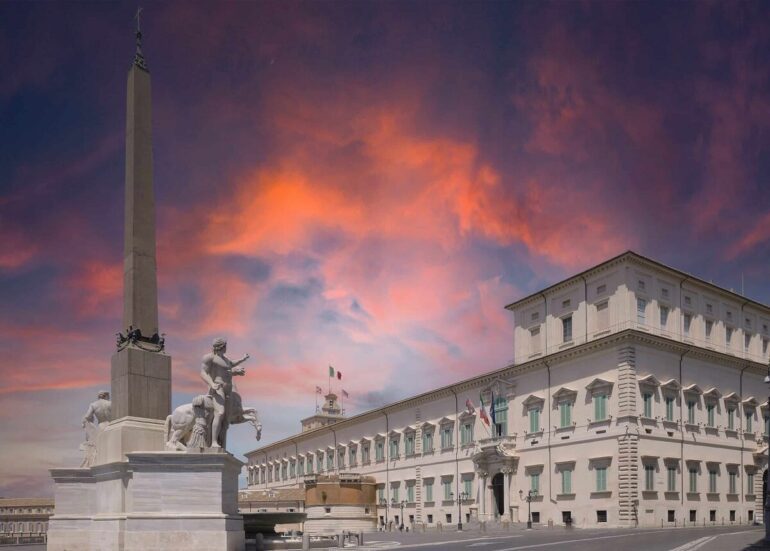Discover the Palace inhabited by Popes, Kings, and Presidents for over 400 years.
The Quirinal Palace, located on the homonymous hill in Rome, is the official residence of the President of the Italian Republic. Originally built as a papal residence, its construction was initiated by Pope Gregory XIII in 1583. Over time, it housed thirty popes as a secondary residence until 1870, when it became the royal palace of the Savoy family during the unification of Italy. Following the establishment of the Republic, the palace officially became the residence of the President of the Italian Republic on 1 January 1948.
The Palace, which covers an area of 110,500 square meters, stands as one of Europe’s largest buildings. Throughout its history, it has been graced by the talents of numerous architects and artists, including Pietro da Cortona, Domenico Fontana, Ferdinando Fuga, Carlo Maderno, Giovanni Paolo Pannini, and Guido Reni.
Quirinal Palace: Useful Info
Booking your visit: To explore the Quirinal Palace, a reservation is required. Reservations can be made through the official Quirinal website or other authorized channels.
Ticket cost: Only a symbolic contribution of €1.5 is required for access to the palace and its art collections.
Free visit days: There are occasions when visiting the Quirinal Palace is free of charge. Typically, these free openings are during special events such as Heritage Day or the President of the Republic’s birthday.
Visiting hours: The Quirinal Palace is open every day except Monday and Thursday from 9:30 am to 4:00 pm, with last entry at 2:30 pm.
Suggested Read: Must-See Palaces in Rome
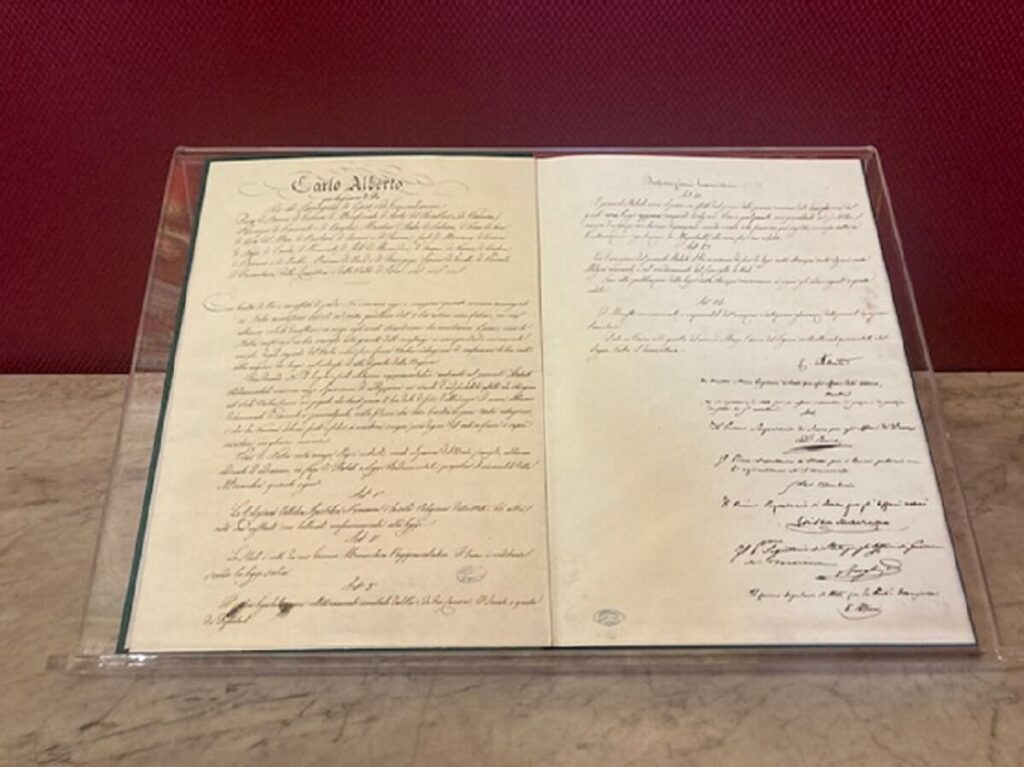
Let’s explore the key spaces of this incredibly significant building, an icon of history, politics, and art: inside, you’ll find one of the original copies of the Italian Constitution and the Albertine Statute carefully preserved.
The Study of the President of the Republic
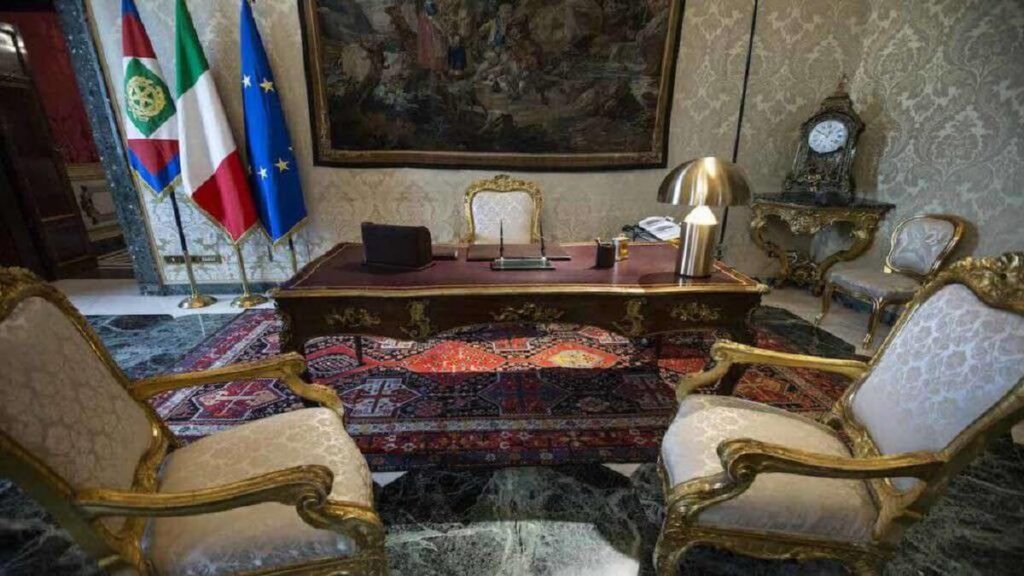
The room, where the President of the Republic holds official meetings with Heads of State and consultations with party secretaries for the formation of the Government, is furnished with furniture dating back to the 18th and 19th centuries. The paintings that adorn the room also date back to the same periods. The President’s desk is of French manufacture and comes from the Royal Palace of Parma.
Salone dei Corazzieri
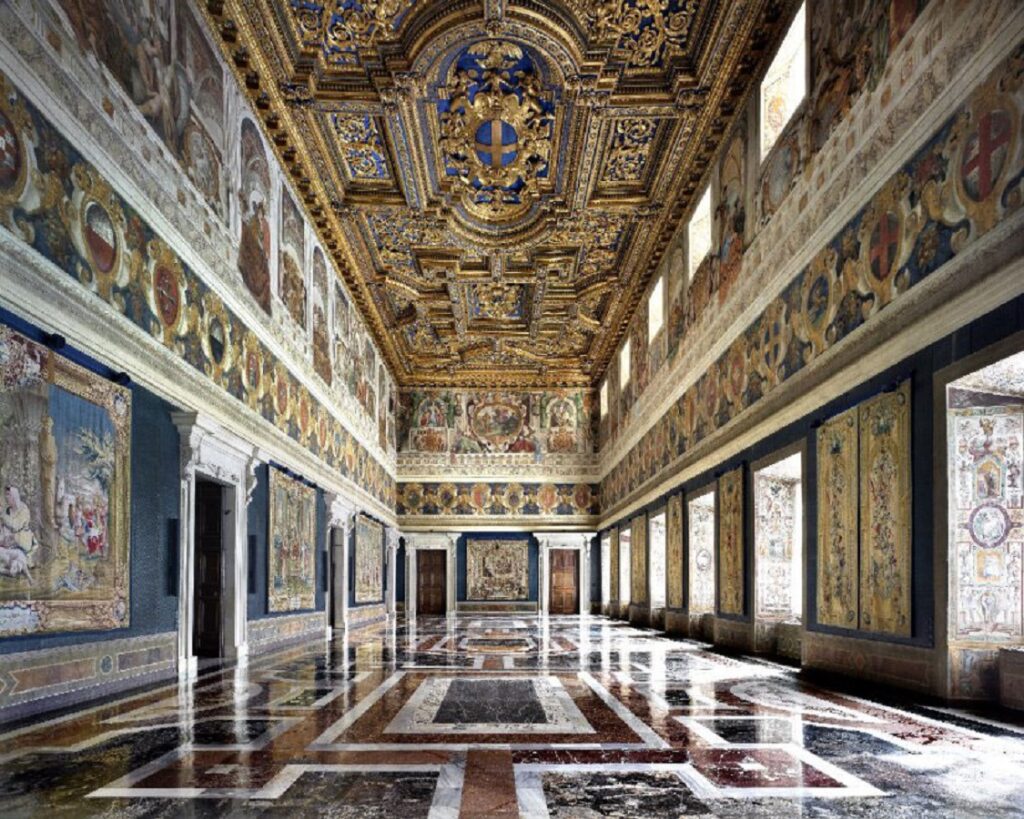
This magnificent reception hall dates back to the early 17th century and features a wooden ceiling and a marble floor from that period. It served as a prestigious venue where the Pope hosted sovereigns and ambassadors: the frieze showcases the eight embassies that arrived in Rome from distant lands during the pontificate of Paul V Borghese. His coat of arms adorns the ceiling, alongside that of the Savoy family.
The royals themselves commissioned a second frieze on the walls, depicting the coats of arms of Italy’s main cities, to commemorate the country’s unification. Covering the walls are two cycles of 18th-century tapestries, one depicting the Stories of Psyche and the other the adventures of Don Quixote. Fun fact: during the early 1900s, the hall was repurposed as an ice skating rink, and later into an indoor tennis court.
Pauline Chapel
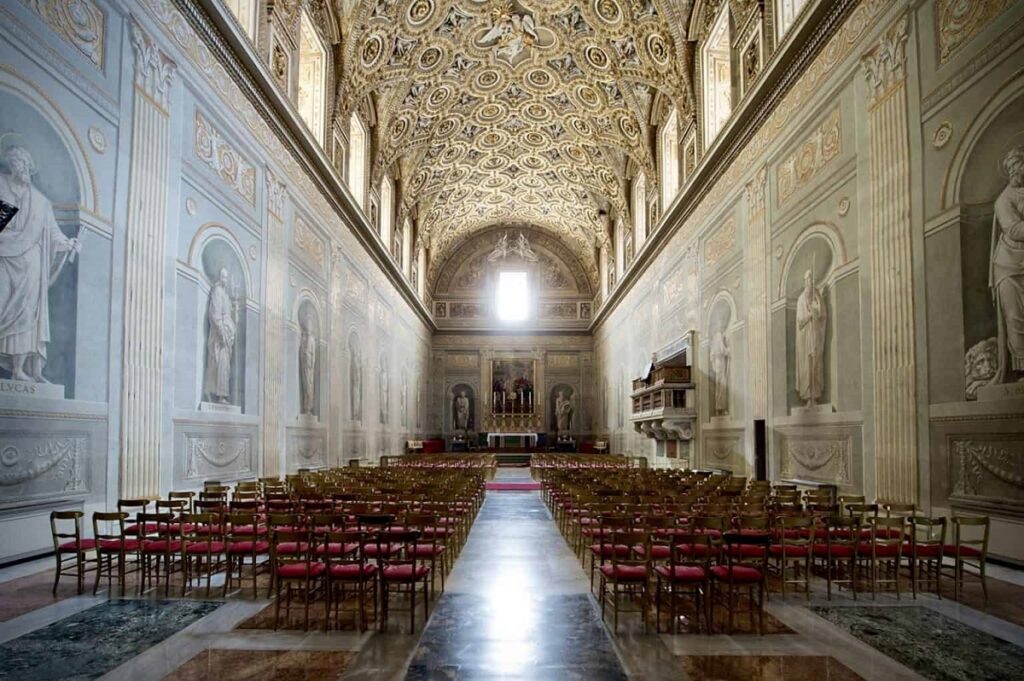
The Pauline Chapel was erected by Pope Paul V Borghese in 1615. The chapel boasts the same grandeur and scale as the Sistine Chapel and was used for four consecutive conclaves. The interior is richly adorned, with the most striking feature being the magnificent vault, crafted in white and gold stucco, creating an explosion of dazzling light.
On the right wall stands an imposing marble balcony, known as the cantoria, which once housed the choir for sung masses. The paintings on the walls date back to the 19th century and depict faux statues of the Apostles, the Evangelists, and Saint Paul. At the altar, a tapestry depicts the Last Sermon of Saint Stephen.
Suggested Read: 16 Must-Visit Churches in Rome
Mascarino staircase
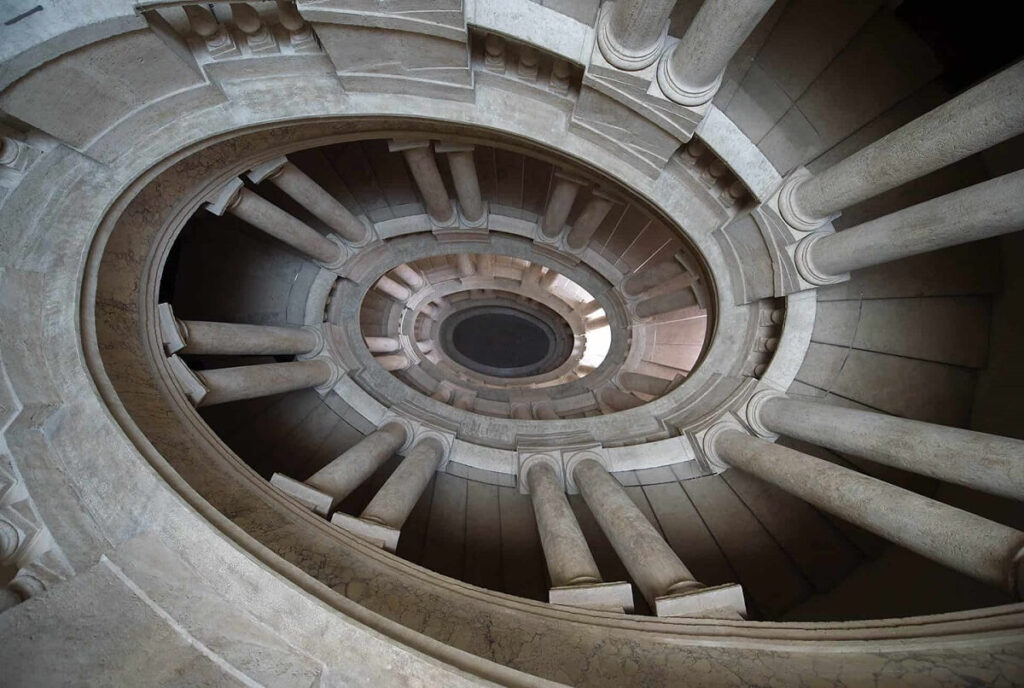
This splendid spiral staircase is the masterpiece of the architect Ottaviano Mascarino. Supported by pairs of travertine columns, it features magnificent chiaroscuro effects created by natural light streaming down from above and into the central well. Borromini drew inspiration from this staircase to create his famous staircase at Palazzo Barberini in Rome.
The Hall of Mirrors

The Hall of Mirrors was originally designated as the ballroom; the paintings on the ceiling depict a whirl of figures suspended in the sky. Along the walls, a row of mirrors reflects the lights of the Murano chandeliers, creating a luminous effect. Designed in Rococo style in 1877 by Ignazio Perricci, following the directives of Princess Margherita, this hall now hosts important institutional events, including the swearing-in ceremony of judges of the Constitutional Court.
The Grand Ballroom
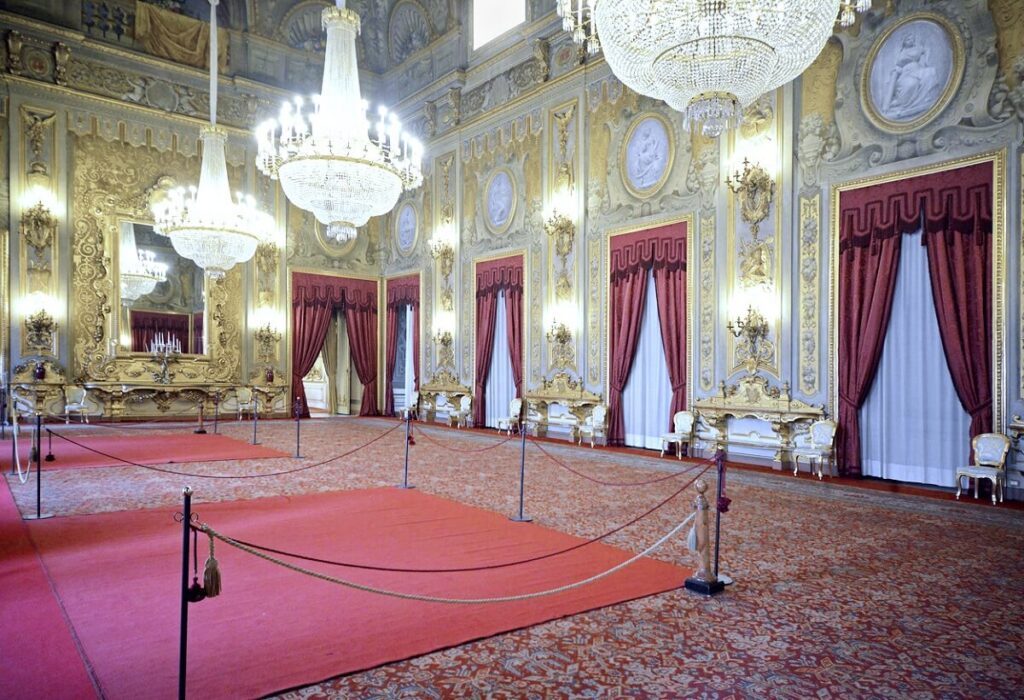
The Grand Ballroom, traditionally used for ceremonies and audiences with a large number of guests, is where State luncheons and the swearing-in of the new government take place. The solemn style of the hall was decided by the Savoy family, as seen in the painting dedicated to the Triumph of Italy portrayed on the ceiling. In 1889, a permanent stage for the orchestra was added, along with a high balcony overlooking the hall where musicians were positioned to accompany court dances.
Visiting the Palace
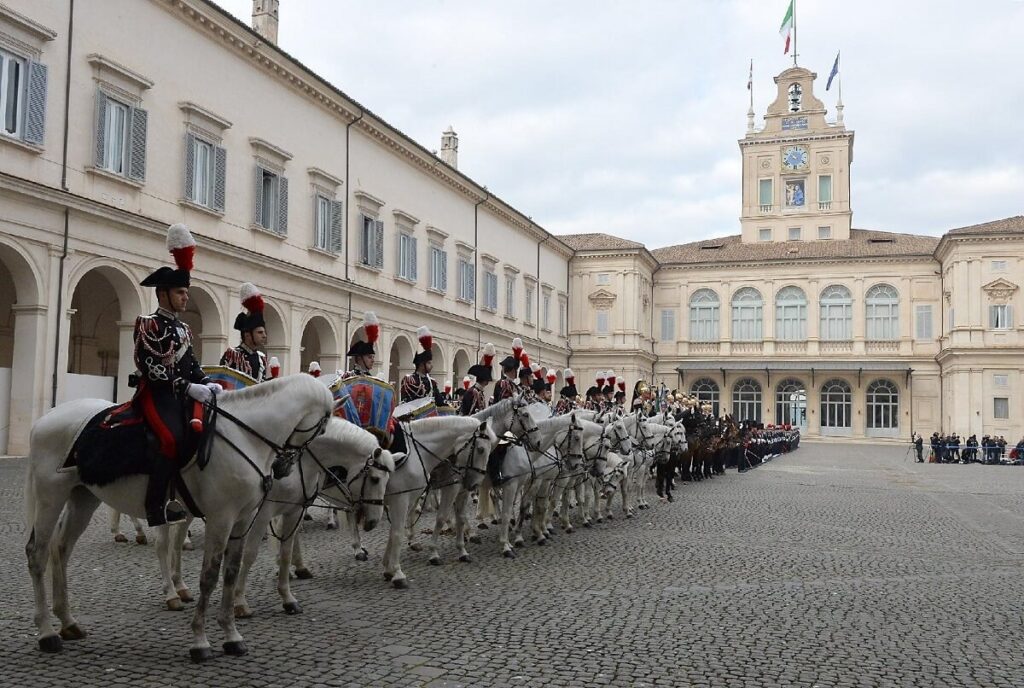
To visit the Quirinal Palace, booking is mandatory at least 5 days in advance. Visitors can choose from three types of tours:
- Art-Institutional Tour: includes a visit to the Ground Floor, Noble Floor, and Imperial Apartments. Duration is approximately 1 hour and 20 minutes. Entry every half hour.
- Thematic Tour: includes a visit to the Vasella, Gardens, and Carriages. Duration is approximately 1 hour and 20 minutes. Entry every half hour.
- Contemporary Quirinal Tour: includes a visit to the Honor Courtyard, Ground Floor, Noble Floor, and Imperial Apartments. This tour focuses on the collection of contemporary artworks and design objects. Duration is approximately 1 hour and 20 minutes. Entry every half hour.
Piazza del Quirinale
Tickets: The itinerary is free, except for a mandatory booking charge of € 1.50.
Closure days: 8 March, 21 April, 1 May, 23 May-3 June, 24 July-8 September, 1 November, 22 December-6 January
Contacts: (+39) 06 39967557


